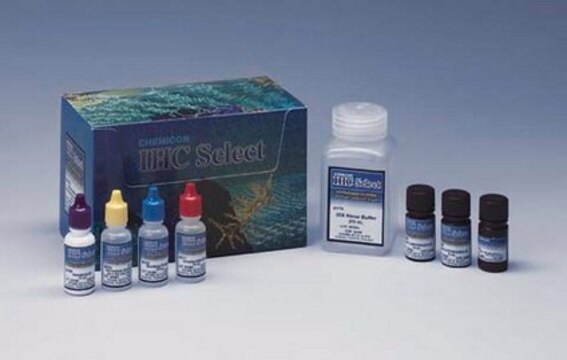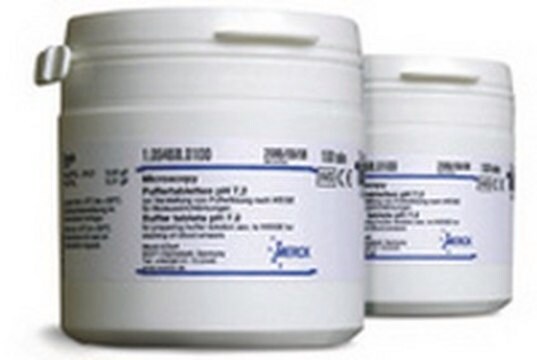D7304
3,3′-Diaminobenzidine (DAB) Liquid Substrate System tetrahydrochloride
Synonym(s):
Chromogenic substrate, DAB substrate solution
About This Item
Recommended Products
General description
Application
- in the immunoblot assay carried out to identify the changes in heat shock proteins (Hsps) expressed in the liver
- for visualization of sections after immunostaining
- in immunohistochemistry of mice knee joint sections
- in the immunolabeling of kisspeptin neurons in the preoptic area of camel
Caution
Quantity
Disclaimer
Kit Components Only
- 10X DAB Liquid Chromogen 25 mL
- ready-to-use buffer/peroxide solution 250 mL
Signal Word
Danger
Hazard Statements
Precautionary Statements
Hazard Classifications
Acute Tox. 3 Dermal - Acute Tox. 3 Inhalation - Acute Tox. 3 Oral - Carc. 1B - Flam. Liq. 2 - STOT SE 1
Target Organs
Eyes,Central nervous system
Storage Class Code
3 - Flammable liquids
WGK
WGK 3
Certificates of Analysis (COA)
Search for Certificates of Analysis (COA) by entering the products Lot/Batch Number. Lot and Batch Numbers can be found on a product’s label following the words ‘Lot’ or ‘Batch’.
Already Own This Product?
Find documentation for the products that you have recently purchased in the Document Library.
Customers Also Viewed
Articles
Nitroblue Tetrazolium (NBT) is used with the alkaline phosphatase substrate 5-Bromo- 4-Chloro-3-Indolyl Phosphate (BCIP) in western blotting and immunohistological staining procedures. These substrate systems produce an insoluble NBT diformazan end product that is blue to purple in color and can be observed visually.
Our team of scientists has experience in all areas of research including Life Science, Material Science, Chemical Synthesis, Chromatography, Analytical and many others.
Contact Technical Service










